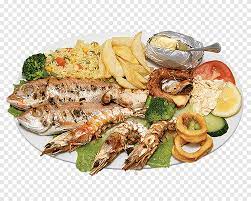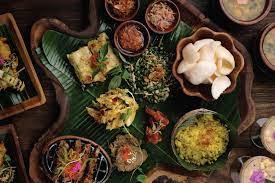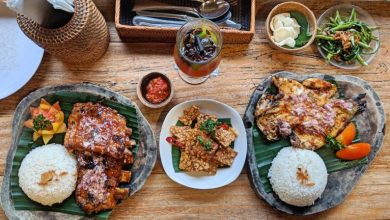A Culinary Journey: Exploring the Diverse Flavors of Bali
Exploring the Diverse Flavors of Bali

In addition to being a paradise for sun worshippers and surfers, Bali, an Indonesian island renowned for its breathtaking scenery and dynamic culture, is also a gastronomic haven for people with a penchant for a wide variety of amazing dishes. The rich tapestry of civilizations that have shaped the island’s food creates a symphony of tastes that entice the palate and reveal Bali’s distinct history. Come along on a taste adventure with us as we discover the many mouthwatering tastes that make Bali a food lover’s heaven.
The Ubiquitous Nasi Goreng:
A trip to Bali would not be complete without sampling Nasi Goreng, the renowned national dish of the island. Served with a fried egg on top, this fragrant fried rice dish is a mainstay in Balinese homes and neighborhood warungs (small cafes). There is a Nasi Goreng for every taste, thanks to its adaptability. Vegetarian variants using tempeh and tofu, as well as ones with delicate chicken or luscious prawns, are all available.
Savoring Satay:
In Bali, satay—skewers of grilled and seasoned meat—is a common street snack. The scent of grilling satay over open flames is tempting; it’s sweet and flavorful. A plate of fragrant rice and a side of peanut sauce are typically served with satay, which can be either chicken (sate ayam), beef (sate sapi), or even more daring selections like fish or lamb. Together, these dishes provide a tantalizing combination of tastes.
Balinese Babi Guling:
Babi Guling is a must-try Balinese dish for pork lovers. This recipe calls for slow-roasting a whole pig over an open flame, producing crispy skin and juicy flesh flavored with a complex mixture of regional spices. Babi Guling, which is usually saved for formal events and ceremonies, exemplifies the Balinese commitment to taste and culinary artistry.


The Versatility of Lawar:
The staple dish of Balinese cuisine is lawar, a traditional mixture of finely chopped beef, shredded coconut, rich herbs, and spices. This tasty meal, which is frequently eaten with rice and comes in a variety of regional varieties such as Lawar Babi (pork), Lawar Ayam (chicken), and Lawar Bebek (duck), is a tribute to Bali’s dedication to using fresh, locally produced ingredients.
Refreshing Sips of Arak and Brem:
Despite not being exactly a food item, discovering Bali’s gastronomic offerings also includes its revitalizing drinks. Arak Madu, an island specialty made with Arak, lime, and honey, is a popular cocktail made with Arak, a native Balinese liquor brewed from rice or palm sap. For those who want to experience local flavors without the alcohol, Brem, a fermented rice wine, is a sweet and somewhat bubbly choice.
The Sweet Indulgence of Dadar Gulung:
Dadar Gulung is a delicious Balinese delicacy that is not to be missed if you have a sweet taste. This vivid green pancake roll is packed with a blend of crushed peanuts, sweet coconut, and palm sugar. Dessert enthusiasts often choose this dish because of its excellent balance of textures and tastes, which is produced by the mix of the creamy filling and the pandan-infused pancake.
Savoring the Catch of the Day:
Bali has an abundance of fresh fish because it is an island. Bali’s seafood emphasizes the island’s link to its maritime beginnings, from delicious prawns served with fragrant rice to grilled fish with traditional sambal (hot chile sauce). Particularly Jimbaran Bay is well-known for its seafood eateries, where patrons may savor the catch of the day while relaxing with their toes in the sand and the sound of the waves playing in the background.
Experiencing Bebek Betutu:
A ceremonial meal called bebek betutu highlights the laborious and complex cooking procedure. The recipe calls for slow-cooking a duck for many hours within banana leaves that has been filled with traditional spices and shredded coconut. The outcome is succulent, tasty meat that is enhanced by the heady scent of spices, resulting in a gastronomic encounter that honors Bali’s cultural legacy.


Conclusion:
A culinary tour of Bali is an experience for the senses, as each dish reveals a different aspect of the island’s culture, history, and lively energy. Bali’s rich diversity of cuisines offers a memorable sensory experience, from street-side satay shops to ceremonial feasts. Hence, Bali’s culinary environment welcomes you to experience the wonder of its varied and delicious cuisine, regardless of your level of experience or desire to try new foods.





